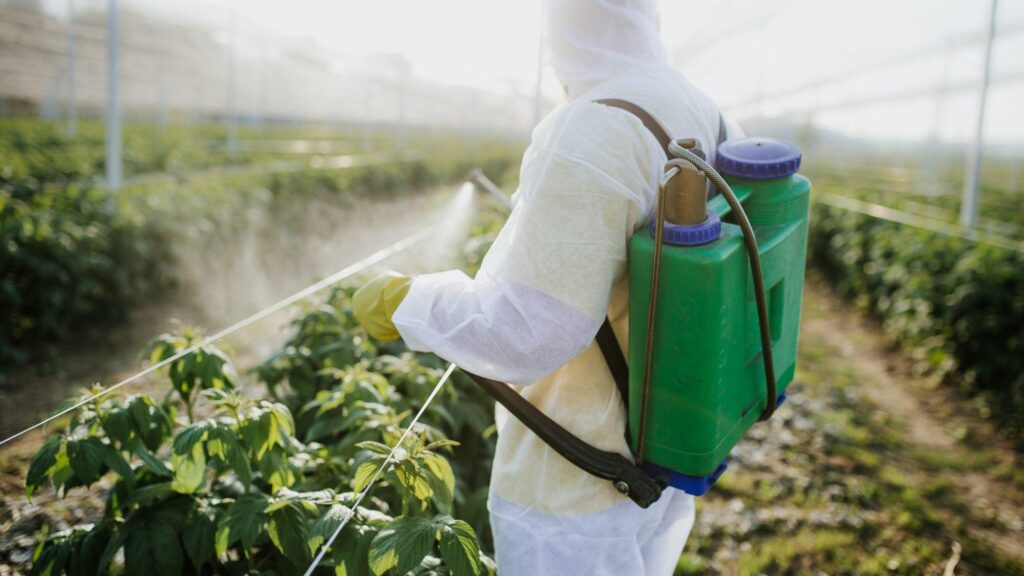Table of Contents
- Safety Alert Emphasizes Immediate Evacuation Following Chemical Application
- Health Risks Associated with Prolonged Exposure to Sprayed Chemicals
- Guidelines for Safe Re-entry Times After Chemical Spraying
- Preventive Measures to Protect Workers and Residents During Chemical Use
- In Conclusion
Safety Alert Emphasizes Immediate Evacuation Following Chemical Application
Following recent reports and safety evaluations, it is critical for all personnel and residents to vacate treated zones immediately after the application of chemicals. Exposure to airborne toxins can pose severe health risks, including respiratory distress, skin irritation, and long-term complications. Authorities and environmental agencies have stressed that remaining in or near sprayed areas increases the likelihood of inhaling hazardous substances, which can result in acute poisoning or allergic reactions.
To ensure safety, adhere strictly to these precautions:
- Leave the area without delay as soon as spraying completes.
- Avoid re-entering treated zones until official clearance is provided.
- Follow all posted signage and instructions from chemical applicators or site managers.
- Inform vulnerable individuals, including children and pets, to stay away from treated environments.
By observing these guidelines, communities can effectively minimize the health hazards posed by chemical treatments and contribute to a safer environment for everyone.
Health Risks Associated with Prolonged Exposure to Sprayed Chemicals
Prolonged contact with sprayed chemicals can lead to a spectrum of serious health complications. These substances often contain toxic compounds capable of causing respiratory issues such as asthma, bronchitis, and other chronic lung conditions. Frequent exposure increases the risk of skin ailments, including rashes, burns, or persistent irritation. Moreover, chemicals may infiltrate the body through inhalation, skin absorption, or accidental ingestion, leading to systemic effects like neurological damage, hormonal imbalances, or long-term organ dysfunction.
Symptoms to watch for after inadvertent exposure include:
- Persistent coughing or wheezing
- Headaches and dizziness
- Eye irritation or blurred vision
- Nausea or gastrointestinal discomfort
- Sensory numbness or weakness
Immediate evacuation from sprayed zones greatly reduces the likelihood of these adverse effects. Employing protective measures and ensuring proper ventilation can also mitigate risk during necessary proximity to such chemicals.
Guidelines for Safe Re-entry Times After Chemical Spraying
After the application of chemical treatments, it is critical to respect a designated waiting period before re-entering the treated zones. This time frame depends on the type of chemical used, its concentration, and environmental conditions such as temperature and humidity. Ignoring these precautions can lead to serious health risks, including respiratory problems, skin irritation, and long-term exposure effects. To ensure safety, always consult the product label and follow the manufacturer’s recommended re-entry interval, which may range from a few hours to several days.
To protect yourself and others, adhere to these essential practices:
- Leave the area immediately post-application, and avoid entering until it is declared safe.
- Wear appropriate protective gear if re-entry is unavoidable within the restricted period.
- Keep pets and non-essential personnel away from treated zones until clearance is confirmed.
- Ventilate indoor areas thoroughly to dissipate any lingering chemical residues.
Preventive Measures to Protect Workers and Residents During Chemical Use
When handling or applying chemicals in residential or work areas, ensuring the safety of all individuals is paramount. Immediate evacuation after spraying is essential to minimize exposure. Workers should be equipped with appropriate personal protective equipment (PPE) such as gloves, masks, and protective clothing, while residents must be informed in advance and advised to stay away from treated zones until it is deemed safe. Proper ventilation after spraying can significantly reduce lingering chemical residues in the air, providing an added layer of protection.
Adopting strict safety protocols can prevent chemical-related incidents. Key preventative steps include:
- Displaying clear warning signs and barriers around sprayed areas
- Implementing scheduled chemical applications during low-occupancy periods
- Training workers thoroughly on chemical handling and emergency response
- Ensuring immediate access to first aid and decontamination stations
- Communicating real-time updates to residents and staff regarding safety timelines
Prioritizing these measures not only safeguards health but also maintains community trust and regulatory compliance.
In Conclusion
In conclusion, adhering to safety protocols and promptly leaving the area after chemical spraying is essential to protect your health and well-being. Staying informed and aware of these precautions can prevent harmful exposure and ensure a safer environment for everyone. Always follow instructions from authorities and use appropriate protective measures when handling or encountering chemicals. Your safety depends on vigilance and responsible action.Check Our Other Blogs
- StunGun – Your Trusted Source for Stun Guns, Laws, and Self-Defense Tips
- PepperSprayLaws – Your Trusted Resource for Pepper Spray Information
- StunGunLaws – Your Trusted Guide to Stun Gun Legality and Safety




